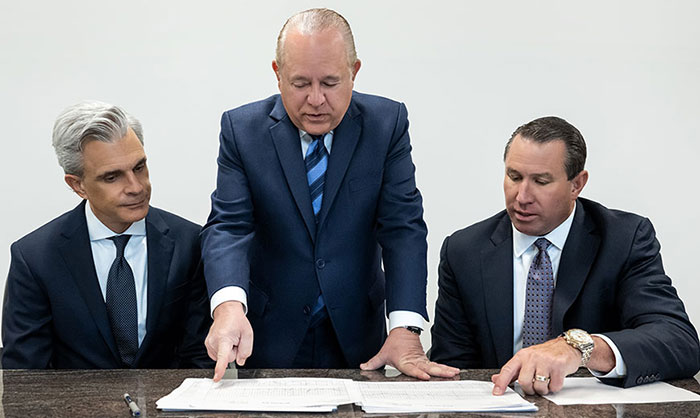Birth Injury Risk Factors
The risk of birth injury in the US is as high as 6 to 8 birth injuries per 1,000 live births (or per 1,000 children). Up to 2% of all infant deaths also occur due to birth injuries. One of the most severe birth injuries is brain injury, which may result in hypoxic-ischemic encephalopathy (HIE), potentially leading to cerebral palsy.

According to the CDC data, cerebral palsy in the US occurs in up to 4 per 1,000 babies. The Autism & Developmental Disabilities Network of the CDC says that cerebral palsy is the most common motor disability in childhood. Among other birth injuries, Stanford Children’s Health says that fracture of the collarbone (clavicle fracture) is the most common birth injury. Babies are also at high risk of Erb’s palsy birth injury, which limits the use of shoulder, arm, and hand.
When doctors (like obstetricians) or labor and delivery nurses or even a mid-wife fail to adequately monitor the baby’s well-being during labor with electronic fetal monitoring or recognize the signs of fetal distress, the risk of birth injury increases greatly. In these situations, if a birth injury occurs the family of the injured child should look to see if the birth injury was avoidable or caused by medical malpractice.
Medical Negligence as a Risk Factor for Birth Injuries
Although congenital factors may lead to birth injuries, medical negligence is one of the key risk factors to watch out for, especially when the birth injury is preventable. Common types of medical negligence that may contribute to or directly cause birth injuries include:
- Lack of diagnosis, misdiagnosis, or delayed diagnosis of potential maternal and/or fetal complications during the pregnancy.
- Failure to properly monitor fetal heart rate when there is a risk of fetal distress or disruption of oxygen supply to the baby’s brain.
- Improper use or overuse of medications to induce labor.
- Failure to perform an emergency cesarean delivery when fetal distress is detected and prolonged.
- Mishandling of assisted delivery or extraction devices, anesthesia errors, poor medical team coordination, or other types of delivery room errors.
- Improper or delayed administration of neonatal resuscitation, therapeutic hypothermia, or other Neonatal ICU errors.
Types of Obstetric Complications and Events that are High Risk Factors for Birth Injuries
Timely detection of the following risk factors during pregnancy, labor or delivery can help prevent or reduce the risk of birth injuries:
- Abnormal fetal presentation
- Placenta previa (placenta obstructing the cervix)
- Placental abruption (placenta separates from the uterine wall)
- Umbilical cord problems
- Prolonged or arrested labor
- Premature rupture of membranes (PROM)
- Uterine rupture (massive bleeding due to tearing of uterus)
- Macrosomia (baby’s size is larger than average)
- Cephalopelvic disproportion (size mismatch between the baby’s head and the mother’s pelvis)
- Maternal infections, such as Group B Strep
- Gestational diabetes
- Preeclampsia (maternal high blood pressure)
- Oligohydramnios (abnormally low levels of amniotic fluid)
- Maternal age above 35
- Maternal pre-existing conditions (such as diabetes, thyroid, or PCOS)
- Multiple babies (twins, triplets or more)
- Rh and ABO incompatibility (incompatible blood group of mother and the baby)
- Meconium aspiration syndrome (baby inhales the first feces when it is mixed with amniotic fluid)
- Neonatal hypoglycemia (low blood glucose levels in the baby due to maternal malnutrition or other causes)
- Fetal bradycardia (in-utero baby’s heart rate is abnormally low)
- Newborn jaundice (baby’s bilirubin levels are high, which may lead to kernicterus, a serious birth injury)
- HELLP Syndrome (elevated liver enzymes and low blood count in the expectant mother)
Premature Birth and Low Birth Weight as Risk Factors for Birth Injury
A baby born before the gestational age of 37 weeks is considered a premature baby. According to the CDC, more than 10% of all babies born in the US are preterm babies, and the rates of premature birth appear to be on the rise. Babies born too prematurely (particularly before the completion of 32 weeks of pregnancy) have higher rates of birth injury and death.
Premature birth also has a correlation with low birth weight. Each year, more than 8% of all babies are born with a low birth weight (weighing less than 5 lbs and 8 oz). This increases their risk of birth injury during labor and delivery. The CDC data shows that premature birth and low birth weight together account for nearly 16% of all infant deaths in the US.
Is Your Child’s Birth Injury the Result of Medical Malpractice?
Parents whose children suffer birth injuries want and deserve answers as to whether mistakes by the doctors and nurses contributed to the injury. At Miller Weisbrod Olesky, our award-winning birth injury attorneys have represented families all over the United States in their time of need after a birth injury. We use our skills and expertise to obtain for you and your child a medical malpractice settlement that will help provide specialized medical therapy in order to maximize the quality of life and independence of your child throughout their life.
- Were there signs of birth injury or birth complications during the pregnancy, labor, and delivery process, or presence of risk factors, which were either not recognized or properly treated?
- During the labor and delivery, were there clear indications that the baby was suffering from fetal distress, but appropriate actions were not taken by the maternal fetal specialists, obstetrician or nurses?
- Was there a delay in diagnosis of a likely premature birth that led to later complications, including brain injury?
- Did the medical team fail to order a series of tests to diagnose this birth complication in a timely manner?
- Was the decision to perform a cesarean delivery delayed leading to birth trauma during vaginal delivery or labor?
- Did the neonatal resuscitation team fail to quickly begin important breathing support?
- Should brain cooling (also called “hypothermia therapy”) have been provided to your baby, but the doctors and nurses failed to perform the appropriate tests or ignored the results of the tests?
Our birth injury attorneys have recovered millions of dollars in settlements for families of children that have suffered a birth injury. At no point in our legal intake process will we ask you to pay anything. The medical review of your case and the consultation are free. We only receive payment when you do, no matter how long or tough your case is.
Registered Nurses and Nurse-Attorneys Are a Vital Part of Our Birth Injury Team…and Yours

Most birth injury law firms will employ one or two nurses to assist the review of cases and medical research. But Miller Weisbrod Olesky offers an unmatched number of nurses and nurse-attorney employees support to both the birth injury attorneys and our clients.
Our team of registered nursing staff and nurse-attorneys bring a deep level of medical and personal insight to every client’s case. Our nursing team includes both an experienced labor and delivery nurse as well as an ICU nurse. Working closely with the rest of the team, they investigate the reasons behind a birth injury and how medical professionals breached their standard of care.
Meet our Legal Nursing Team
Linda Chalk

As a registered nurse, Linda practiced ICU nursing for 44 years while caring for a wide range of patient conditions. She has worked closely with founding partner Les Weisbrod for over 30 years, investigating and pursuing birth injury cases.
Along with DJ Weisbrod, Linda heads up the firm’s birth injury intake, screening, and medical literature research team. She personally screens all potential cases to ensure that medical issues have been addressed before we file lawsuits on behalf of birth-injured children and their families.
DJ Weisbrod

Before joining Miller Weisbrod, DJ practiced as a surgical nurse in various hospital and operative settings. She has been with the firm over 30 years.
DJ directs Miller Weisbrod’s birth injury intake and medical screening team. She has also served as firm founder Les Weisbrod’s trial nurse for all cases involving medical negligence and birth injury.
Linda Cuaderes

Linda Cuaderes is both a registered nurse and a licensed lawyer. Linda works exclusively in Miller Weisbrod’s Birth Injury and Medical Malpractice section. Linda acts as the firm’s patient advocate and liaison with our young clients and their parents.
Linda combines her legal and nursing experience along with her exceptional organizational talent and attention to detail to make sure each child we represent is provided the highest level of medical care and attendant care during the pendency of their case. Linda communicates with our parent clients regularly to monitor their birth injured child’s treatment, provide guidance as to additional care and therapies and when necessary assist them in obtaining specialized medical providers.
Linda was raised in Bartlesville, Oklahoma and completed her Bachelor of Science in Nursing with Honors at the University of Oklahoma. She started as an Oncology Nurse at Presbyterian Hospital in Oklahoma City, quickly becoming the Assistant Head Nurse of the Outpatient Endoscopy Unit. Linda then entered the University of Oklahoma College of Law.
Following graduation, Linda joined Les Weisbrod in the Medical Malpractice Section. After taking time off to raise her three lovely children, Linda returned to Miller Weisbrod and her passion of holding healthcare providers accountable for preventable errors. Linda is active in the American Association for Justice, Texas Trial Lawyers Association, Dallas Trial Lawyers Association, and the Texas Bar Association. Linda is an active member of the Birth Trauma Litigation Group and Medical Negligence Section of the American Association for Justice.
She is admitted to practice before the Texas Supreme Court and routinely works on cases pending throughout the United States. Linda has worked with child victims of birth injury, their parents and other victims of medical malpractice in Texas, New Mexico, Oklahoma, Arkansas, Louisiana, Iowa, Ohio, New York, Alabama, Georgia, Arizona, Utah and Missouri.
Education
- University of Oklahoma - School of Law, 1990, J.D. - Norman, Oklahoma
- University of Oklahoma - School of Nursing, 1985 - Norman, Oklahoma
Areas of Practice
- Birth Injury/Birth Trauma
- Medical Malpractice
Associations & Memberships
- Texas Bar Association
- American Association of Justice
- Texas Trial Lawyers Association
- Dallas Trial Lawyers Association
Kristin Jones

Kristin combines her medical and legal training to provide invaluable, passionate service to parents struggling to care for their birth-injured children.
Families often have questions as they go through the birth injury lawsuit process. Kristin diligently identifies and investigates all medical issues so the birth injury attorneys at Miller Weisbrod can answer those questions Kristin ensures that our birth injured children’s medical records are thoroughly reviewed and organized. Miller Weisbrod’s birth trauma litigation attorneys and medical experts retained by the firm need her services while pursuing justice for our clients.
Kelly Kunkel

Kelly Kunkel was born and raised in Dallas, Texas. She has 15 years’ experience in hospital based High Risk Obstetrics and Labor and Delivery bedside nursing care. Kelly graduated with an Associate’s Degree in Nursing from El Centro College in December of 1990 and received her Bachelor’s Degree in Nursing from West Texas A & M University in 2008; graduating with honors.
In addition, Kelly has over 25 years’ experience in medical malpractice case management and litigation and has worked with David Olesky for over 22 years. After many years of assisting in defending healthcare providers and hospital systems in medical malpractice cases involving complex litigation matters related to birth injury, catastrophic injury and death, Kelly has proudly joined David Olesky in the national birth injury and medical negligence practice at Miller Weisbrod Olesky.
Why Should You Talk with the Highly Capable Attorneys at Miller Weisbrod Olesky?

The only way to find out if you have a birth injury case is to talk to a lawyer experienced in birth injury lawsuits. It’s not uncommon that a birth related complication results in a preventable birth injury, including cerebral palsy, but it takes a detailed expert review by a birth injury attorney of the medical records from your child’s birth to determine if the birth injury was the result of medical malpractice.
At Miller Weisbrod Olesky, a team of committed lawyers, nurses and paralegals uses our detailed medical negligence case review process to assess your child’s potential birth injury case. We start by learning more about you and your child and the status of meeting/missing developmental milestones. Then we gather medical records to determine what happened before, during pregnancy. We call in documented and proven medical experts who review your records and let us know if they think medical errors could have caused your child’s injuries.
If we feel medical negligence caused or contributed to wrongful birth in your case, we meet with you to discuss how you can receive compensation from the medical professionals who made the errors. Our birth injury attorneys have recovered millions of dollars in settlements for families of children that have suffered a birth injury.
At no point in our legal intake process will we ask you to pay anything. The medical review of your case and the consultation are free. We only receive payment when you do no matter how long or tough your case is.
